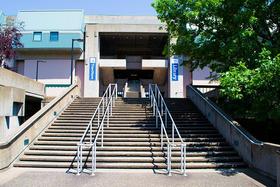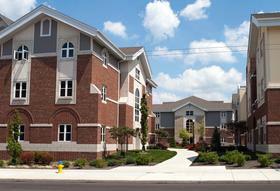The term "dropout factories" was created to label high schools in the U.S. with dismally low graduation rates. However, the phrase has now moved into the community college sphere, as statistics indicate some community colleges are not living up to the task of helping students see their degree programs through to completion. The good news is that amid the dropout factories, there are plenty of schools improving students' odds for success through effective programs and services. It is up to students to weed through the data to choose the college that offers the best odds of success.
This video explores the fact that fewer than 40% of community college students graduate or transfer in three years.
The Definition of a "Dropout Factory"
There is no definition of a dropout factory when referring to community colleges – it depends partly on individual perceptions of what constitutes a low completion rate. A report at CNN Money defines dropout factories as schools with a completion rate of 25 percent or less, a number established by College Measures president Mark Schneider. The completion rate refers to the number of first-year students who enter the school full-time and earn a degree within three years.
Another source, the Center for the Social Organization of Schools at Johns Hopkins University, defines dropout factories at high school and community college levels as those with 60 percent or less graduation rates. According to Arizona's State Brief blog, every single community college in Arizona would be classified as a dropout factory by this standard. However, two of the state's institutions would meet the 25-percent benchmark, and many others would be very close to that.
This video illustrates the community college dropout problem.
The Cost of Dropout Factories
No matter how you define them, the consensus is that dropout factories cost plenty – for students and taxpayers. An article at the Las Vegas Sun cites a report showing taxpayers have spent nearly $4 billion over five years on community college dropouts. The report, compiled by the American Institutes for Research, indicated that only 35 percent of full-time first-year students entering college for the first time will leave the institution with a degree. The graduation rate for part-time students is even more dismal – only seven percent earn a degree.
The cost of these underperforming institutions varies since schools boast dramatic ranges in completion rates. For example, Baton Rouge Community College in Louisiana had a completion rate of just five percent among incoming first-year students who started at the school during the fall semester in 2007. On the other hand, completion rates across the country at De Anza College in Cupertino, California, were 74 percent during the same time frame. Huge discrepancies demonstrate the need for students to shop around for the best community college rather than simply attending the closest one to home.
Avoiding the Dropout Factory Trap
To ensure the community college you choose does not fall into the dropout factory category, there are eight factors to consider when selecting a school:
Success Rates
Success rates are a vital component to consider when looking at community colleges. While completion rates alone will not determine the total quality of the school, they are an essential indicator of an individual student's odds of success. Schneider told CNN, "When people look at these [low graduation] numbers, they think that they are going to be in the 10 percent who will succeed. But the odds are that you won't."
Success Rates of Specific Programs
If you are heading to community college with a specific degree program in mind, find out the program's success rate in which you are interested. While a school might have a stellar completion rate overall, the graduation numbers for the department you are looking at could be considerably lower.
Transfer Opportunities
Many students enroll in a community college to transferto a four-year institution after graduation. If they discover many of the credits they earn at community college will not transfer, they may drop out before they finish their associate degree. Ask about transfer programs between the community college and nearby universities.
Budget Cuts
Even schools with high completion rates may expect those stellar numbers to fall due to significant budget cuts. For example, De Anza President Brian Murphy told CNN that budget cuts in California could negatively impact the school's ability to see students through to graduation.
Remedial Education
Many students enroll in community college without proper academic preparation and hold up the higher education process with seemingly endless remedial classes. Schools that have learned to streamline or shorten remedial education time tend to boast higher completion rates. Find out how remedial courses work at the college you are considering.
This video offers one student's thoughts on being a dropout.
Course Availability
The longer it takes to earn a community college degree, the more likely something will arise to thwart higher education plans. When students wait for in-demand courses, it delays the college process. Ask about course wait lists, particularly those you know you need to complete your degree program.
Honors Programs
Some community colleges with low completion rates may also offer honors programs with much higher graduation numbers. Find out if the school you are considering offers such a program to increase your odds of success.
Online Course Offerings
Community college students often drop out of school due to family and work responsibilities or the expense of school. According to the Los Angeles Times, online courses help students work around these obstacles by providing a convenient, low-cost option to campus programs.
Community college success rates are still low at many schools across the country. However, students who are serious about earning a degree can shop around for the best schools to significantly increase their odds of graduation success.
Questions? Contact us on Facebook. @communitycollegereview



































































































